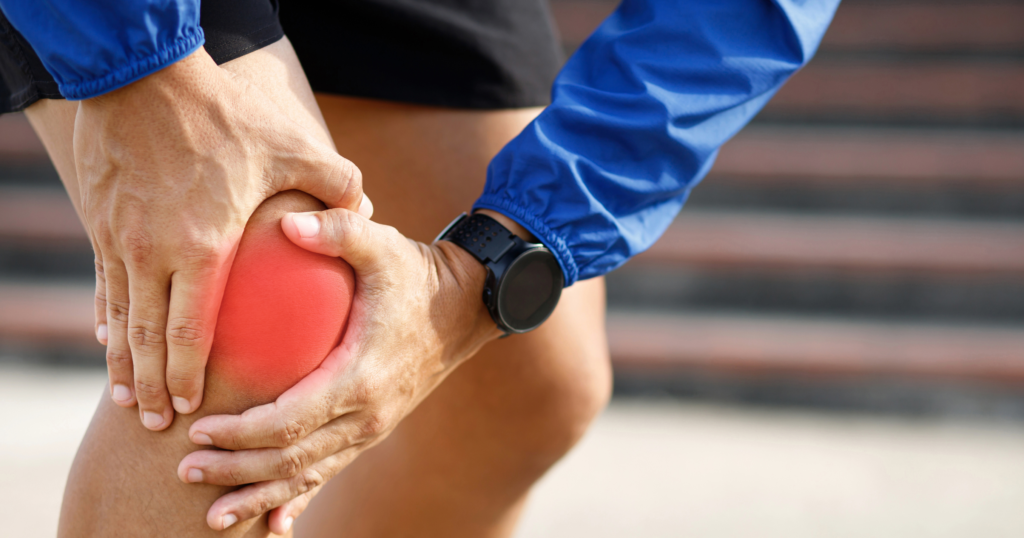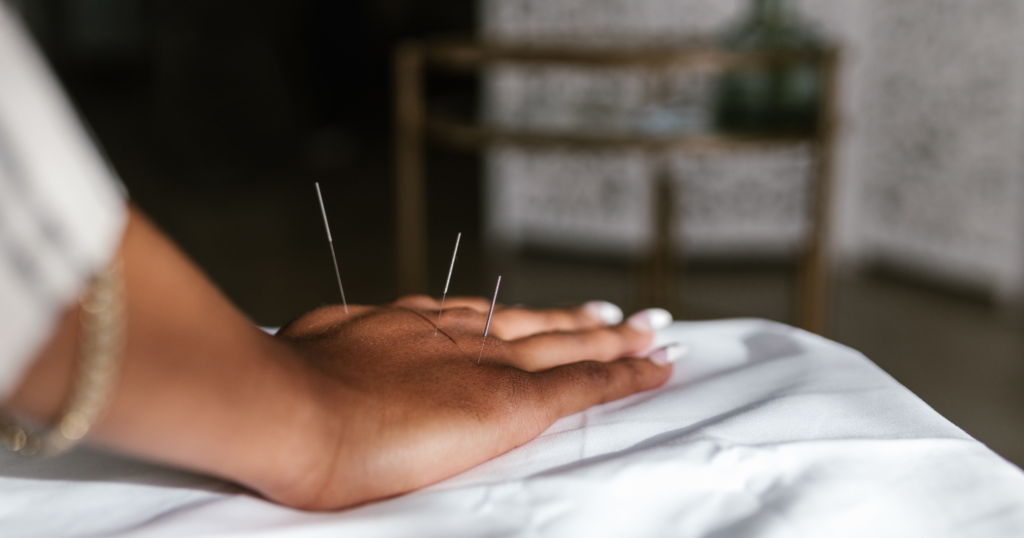Acupuncture for Arthritis: How It Works and What Science Says
Arthritis is not just a condition; it’s a life-altering experience that affects every aspect of one’s being. From the early morning stiffness that makes simple tasks a challenge to the chronic pain that can disrupt sleep and social interactions, arthritis demands attention and care. While conventional treatments are often the first line of defense, many individuals are drawn to alternative therapies like acupuncture.
At ACA Acupuncture, we believe in a holistic approach to managing arthritis pain and improving overall well-being. This ancient practice, rooted in Traditional Chinese Medicine (TCM), focuses on restoring balance and harmony within the body. Acupuncture is not intended to replace conventional treatments but rather to complement them. With the guidance of skilled practitioners, it serves as an additional tool in the arsenal against arthritis, offering potential benefits that can enhance quality of life and provide much-needed relief.
How Acupuncture May Help Arthritis: Exploring the Mechanisms
Neurological Effects
Acupuncture’s impact on the nervous system is multifaceted. By stimulating specific points on the body, acupuncture triggers the release of endorphins and other neurotransmitters, which play a crucial role in pain modulation. This process can significantly reduce the perception of pain, offering relief to those suffering from arthritis.
The gate control theory of pain suggests that acupuncture may interrupt pain signals to the brain, further contributing to its analgesic effects. Brain imaging studies have highlighted areas activated during acupuncture, providing insights into its neurological mechanisms. These studies show that acupuncture can alter brain activity in regions associated with pain processing, emotion, and memory, which may explain its broader effects on well-being.
Inflammatory Response
Inflammation is a key component of many arthritis types, particularly RA. Acupuncture has been shown to influence the inflammatory response by regulating cytokines, which are proteins involved in inflammation. This potential anti-inflammatory effect could help manage symptoms and improve quality of life for individuals with RA.
Moreover, acupuncture may modulate the hypothalamic-pituitary-adrenal (HPA) axis, which is responsible for the body’s stress response. By influencing cortisol levels, acupuncture could help mitigate the impact of stress on arthritis symptoms. Stress is known to exacerbate inflammation and pain, making stress management a critical aspect of arthritis care.
Microcirculation and Tissue Repair
Acupuncture can improve microcirculation, enhancing blood flow to affected areas. This increased blood flow may aid in tissue repair and reduce inflammation, potentially improving joint health and function. Improved microcirculation can also facilitate the delivery of nutrients and oxygen to tissues, supporting healing and reducing pain.
Connective Tissue and Fascia
Fascia, a network of connective tissue, plays a significant role in pain and mobility. Acupuncture can affect fascia by releasing tension and improving flexibility. This can lead to better joint mobility and reduced pain, as tight fascia can contribute to stiffness and discomfort.
The Placebo Effect (and Beyond)
While the placebo effect undoubtedly plays a role in the perceived benefits of acupuncture, it is essential to differentiate between placebo responses and genuine physiological effects. The patient-practitioner relationship is crucial in enhancing the therapeutic effect of acupuncture. A supportive and empathetic practitioner can foster trust and improve outcomes by creating a positive environment for healing.
Relief for Specific Types of Arthritis: What the Research Says
Osteoarthritis (OA)
Osteoarthritis is the most common form of arthritis, characterized by wear and tear on joints. While some studies suggest that acupuncture may offer minimal relief for OA, particularly for hip osteoarthritis, other research indicates that it can be effective for knee OA. A 2018 review found that acupuncture was more effective than no treatment for osteoarthritis pain, with benefits comparable to those of NSAIDs. The American College of Rheumatology conditionally recommends acupuncture for knee, hip, or hand OA, highlighting its potential as a complementary therapy.
Rheumatoid Arthritis (RA)
Rheumatoid arthritis is an autoimmune condition that causes inflammation and pain in the joints. Recent research suggests that acupuncture may be beneficial for managing RA symptoms, including pain, inflammation, and fatigue. A review of 43 studies concluded that acupuncture, alone or combined with other treatments, can improve function and quality of life for individuals with RA. Acupuncture’s anti-inflammatory and antioxidative effects may contribute to these benefits.
Other Types of Arthritis
Acupuncture may also provide relief for less commonly studied forms of arthritis, such as psoriatic arthritis, ankylosing spondylitis, and gout. These conditions involve significant inflammation and pain, making it a potentially useful complementary therapy. By targeting these symptoms, this approach can help improve the quality of life for individuals with these types of arthritis.
What to Expect During a Session
During an acupuncture session for arthritis, you can expect a comprehensive initial consultation that includes a detailed health history, physical examination, and discussion of symptoms and treatment goals. This may also involve pulse and tongue diagnosis to assess your body’s energy balance. The treatment process involves the insertion of fine needles into specific points tailored to your condition, with techniques varying in depth and manipulation.
As needles are inserted, you might feel a mild sensation known as “Deqi,” described as a dull ache or heaviness, which is generally temporary. After the session, you may feel relaxed, energized, or experience emotional releases. Open communication with our acupuncturists at ACA Acupuncture and Wellness is key to ensuring a comfortable and effective experience.
Key Pressure Points for Pain Relief
Discover the key pressure points that can help alleviate discomfort, improve mobility, and support overall well-being.
Points for Knee Osteoarthritis
For knee osteoarthritis, several points are commonly used:
- ST 34 Liangqiu: This point is located on the front of the leg, just below the kneecap. It is used to relieve pain and stiffness in the knee.
- ST 35 Dúbí: Situated on the lateral aspect of the knee, this point helps in reducing pain and improving mobility.
- ST 36 Zúsānlî: Known as the “Leg Three Li,” this point is located below the kneecap and is used to tonify Qi and blood, which can aid in healing and pain relief.
- SP 9 Yīnlígquán: Located on the inside of the knee, this point is beneficial for resolving dampness and relieving knee pain.
Points for Hand and Finger Arthritis
For arthritis affecting the hands and fingers, the following points can be beneficial:
- LI 4 Hégû: Located on the back of the hand between the thumb and index finger, this point is known for its pain-relieving properties and is often used to boost immunity.
- LI 11: Situated on the outermost crease of the bent elbow, this point is effective in alleviating pain and can be used for various types of arthritis.
- LI 5: This point is a common acupressure point for arthritis in the hands, though it is also used for treating frontal headaches and swelling of the eye.
Points for General Arthritis Relief
In addition to specific points for different joints, some points are generally beneficial for overall arthritis relief:
- DU 20 Bâihuì: Located at the top of the head, this point is used to calm the mind and reduce pain.
- LI 10 Shousanli: Situated on the forearm, this point is known for its ability to relieve pain and improve circulation.
Safety and Potential Side Effects
Acupuncture is widely considered a safe and low-risk treatment when performed by experienced professionals. Minor side effects—such as light bruising, mild bleeding at the needle site, dizziness, or fatigue—may occasionally occur, but they are typically short-lived and manageable.
At ACA Acupuncture, your safety is our top priority. Our licensed practitioners are highly trained in sterile needle techniques and follow the highest standards of care to ensure a comfortable and secure experience. We take the time to understand your health history and tailor each treatment with precision and professionalism.
Maximizing the Benefits
Acupuncture is a powerful tool, but it works best as part of a broader arthritis management plan. Relief is often most effective when integrated with other therapies and healthy lifestyle choices. Think of it not as a standalone solution, but as a key element woven into your personal journey toward wellness—enhancing the effects of conventional treatments and supporting long-term well-being.
Complementary Therapies
Adjunctive treatments such as moxibustion (a heat therapy that involves burning herbal material near the skin), cupping (which uses suction to stimulate circulation), and electroacupuncture (where gentle electrical currents are applied to the needles) may be used to enhance therapeutic effects. These techniques can support pain relief, reduce inflammation, and encourage the body’s natural healing response. Pairing sessions with physical therapy—which focuses on improving strength, flexibility, and joint function—can further support mobility and reduce stiffness over time.
Lifestyle Factors
A well-rounded lifestyle plays a vital role in managing arthritis. A balanced diet rich in anti-inflammatory foods and supplements can help reduce inflammation and ease symptoms. Regular, tailored exercise routines support joint health and mobility. Stress management practices—such as meditation, yoga, or deep breathing—can ease the body’s inflammatory response, while also promoting emotional balance and resilience.
Sleep Hygiene
Quality sleep is essential for healing and recovery. Aim for 7–9 hours of restful sleep each night. Establish a consistent sleep schedule, create a calming bedtime routine, and ensure your sleep environment is quiet, dark, and comfortable. Better sleep can support your body’s natural ability to repair itself and manage inflammation.
The Importance of Consistency
To get the most from acupuncture, consistency is key. Following your recommended treatment plan over time allows for more effective, sustainable symptom relief. When combined with healthy habits and supportive therapies, regular acupuncture sessions can help you manage arthritis symptoms and maintain a better quality of life.
Toward Arthritis Relief
As we close this discussion, one thing is clear—acupuncture offers a safe, gentle, and effective way to support those living with arthritis. It’s not just about relieving pain; it’s about improving your quality of life, boosting mobility, and helping you feel more like yourself again.
At ACA Acupuncture, we are dedicated to providing compassionate, evidence-based care that blends traditional Chinese medicine with modern medical insights. Our experienced practitioners take a holistic approach, tailoring treatments to individual needs to help relieve pain, restore balance, and enhance overall health. Whether you’re seeking relief from chronic conditions, stress management, or improved mobility, ACA Acupuncture is here to support you on your wellness journey.
Sources:
Berman, B. M., Lao, L., Langenberg, P., Lee, W. L., Gilpin, A. M., & Hochberg, M. C. (2004). Effectiveness of acupuncture as adjunctive therapy in osteoarthritis of the knee. Annals of Internal Medicine, 141(12), 901. https://doi.org/10.7326/0003-4819-141-12-200412210-00006
Witt, C. M., Jena, S., Brinkhaus, B., Liecker, B., Wegscheider, K., & Willich, S. N. (2006). Acupuncture in patients with osteoarthritis of the knee or hip: A randomized, controlled trial with an additional nonrandomized arm. Arthritis & Rheumatism, 54(11), 3485–3493. https://doi.org/10.1002/art.22154
Frequently Asked Questions
Does Acupuncture Do Anything for Arthritis?
Acupuncture may help alleviate arthritis symptoms by reducing pain and inflammation. While some studies show mixed results, others suggest that acupuncture can improve pain management and function, particularly for conditions like rheumatoid arthritis (RA) and knee osteoarthritis (OA). It is often used as a complementary therapy to enhance conventional treatments.
What Is the Most Effective Treatment for Arthritis?
The most effective approach blends physical therapy, stress management, quality sleep, and anti-inflammatory nutrition. Complementary therapies like acupuncture, cupping, and moxibustion can further support circulation, reduce inflammation, and relieve pain. A consistent, holistic routine tends to offer the best long-term results and improved mobility.
What Do Chinese People Do for Arthritis?
Traditional Chinese Medicine (TCM) offers various approaches for managing arthritis, including acupuncture, herbal remedies, Tai Chi, therapeutic massage, and cupping therapy. These methods aim to restore balance and promote overall health, addressing pain, inflammation, and stiffness. Chinese herbal remedies and exercises like Tai Chi are used to relieve symptoms and improve joint health.
How Long Does Acupuncture Take to Work for Arthritis?
The time it takes for acupuncture to show benefits for arthritis can vary. Some patients may experience relief after a few sessions, while others may require more time. A study by Dr. Berman found significant improvements in pain and function after 26 weeks of treatment. Consistency and patience are key when integrating acupuncture into your treatment plan.
How Much Does Acupuncture Cost for Arthritis?
The cost of acupuncture varies based on factors such as location, practitioner expertise, and the number of sessions needed. On average, a single session typically costs between $60 and $120. Some insurance plans provide coverage for acupuncture treatments, so it’s best to check with your provider to see if it’s included in your benefits.
Is Cupping Good for Arthritis?
Cupping, often used alongside acupuncture, may help improve blood flow and reduce inflammation, which can be beneficial for arthritis symptoms. While specific evidence on cupping for arthritis is limited, it is generally considered safe and may enhance the effects of acupuncture treatment.
Contact ACA Acupuncture & Wellness
Get in Touch
Newsletter Sign Up

ACA Franchise Opportunities
The over $4 billion US acupuncture market offers a great opportunity with over 10% annual growth rates and a continuing flow of new patients interested in the benefits of acupuncture.




